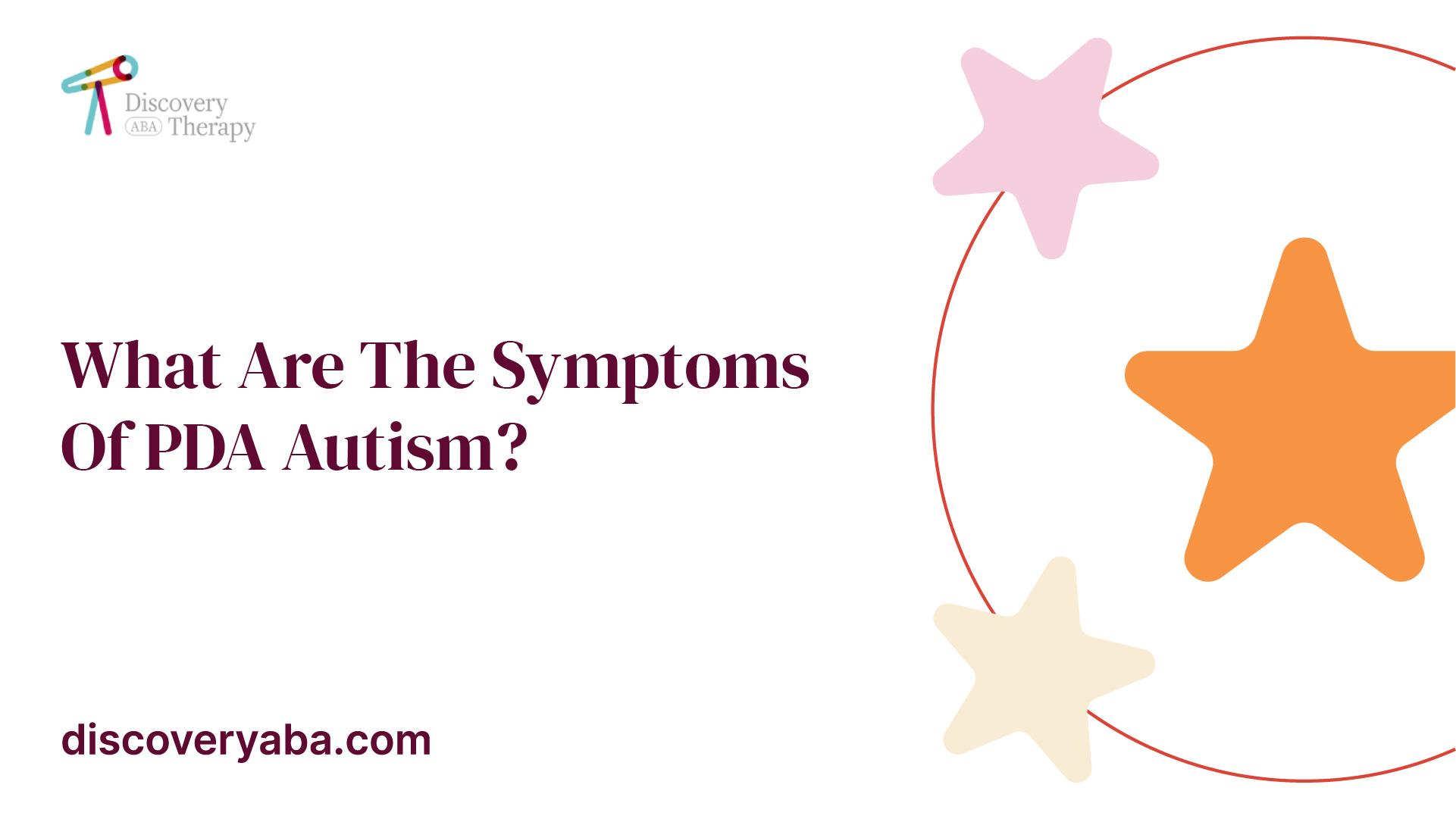Does Autism Behavioral Therapy really help? Find out how
Does Autism Behavioral Therapy really help? Find out how
Blog Article
Promoting Inclusivity: Just How to Produce Supportive Environments for Those With Behavior Autism
Creating helpful settings for individuals with behavior autism is essential for promoting inclusivity. What specific steps can you take to ensure these people flourish in numerous settings?
Recognizing Behavioral Autism: Key Qualities and Challenges
Understanding behavioral autism involves recognizing its essential attributes and the difficulties it offers. People with autism usually show difficulties in social interaction, communication, and repetitive behaviors.

Supporting a person with behavior autism implies being patient and versatile. You'll need to create a setting that lessens tension and promotes convenience.
The Function of Empathy in Sustaining People With Autism
Empathy plays a crucial function in supporting people with autism by assisting you comprehend their unique viewpoints. By practicing energetic listening methods, you can build psychological connections that promote trust and interaction - Autism Therapist. This understanding not just enhances your connection yet likewise develops a more encouraging environment for them
Understanding Special Perspectives
When you take into consideration the unique point of views of people with autism, it becomes clear exactly how essential empathy is in supplying reliable support. Everyone's experience is formed by various sensory sensitivities, communication styles, and psychological feedbacks. By entering their shoes, you can begin to recognize their globe. This understanding helps you respond a lot more attentively to their obstacles and needs. Identifying their strengths and has a hard time cultivates a deeper connection, building depend on and urging open interaction. Your capacity to understand allows you to develop an environment where they feel safe, valued, and understood. This supportive atmosphere empowers people with autism to share themselves, ultimately enhancing their well-being and growth. Compassion is not simply an ability; it's an essential structure for meaningful partnerships.

Active Paying Attention Strategies
Energetic listening strategies play a crucial function in supporting people with autism, as they foster a deeper link and understanding. You show that you value their sensations and thoughts when you involve in energetic listening. Maintain eye contact, nod, and use spoken affirmations to signal your listening. Paraphrase what they claim to verify your understanding, and ask flexible inquiries to motivate further expression. Stay clear of interrupting, permitting them to articulate their factors fully. Be conscious of your body language; it should be open and welcoming. By exercising these methods, you develop a risk-free room where people feel listened to and respected, inevitably enhancing their interaction and psychological wellness. Compassion radiates via when you actively pay attention, enhancing your connection with them.
Structure Emotional Links
Developing a supportive environment through active listening naturally leads to building emotional links with people on the autism range. When you absolutely involve, you're not simply hearing their words; you're recognizing their sensations.

Effective Interaction Methods for Inclusivity
Efficient communication approaches play a necessary duty in promoting inclusivity for individuals with behavior autism. Start by utilizing clear, straightforward language that's understandable. Stay clear of idioms or abstract expressions; they can be complicated. Rather, be certain and direct regarding what you mean.
Nonverbal signs are equally vital. Take notice of your body movement, faces, and tone of voice, as these can share more than words. Preserve eye call and use gestures to boost understanding.
Additionally, hold your horses and offer individuals time to procedure details. Encourage them to reveal their feelings and thoughts, revealing that their input is valued.
Energetic listening is important; repeat or reword what they have actually said to confirm understanding. Adapt your interaction techniques based on private choices, whether it's through visual aids, composed directions, or various other devices. This individual touch reinforces inclusion and helps develop meaningful links.
Customizing Assistance Equipments in Educational Setups
In instructional setups, you'll wish to concentrate on Individualized Education Plans (IEPs) that satisfy each student's unique needs. Creating a sensory-friendly classroom design can also enhance learning by reducing diversions and promoting comfort. Read More Here Together, these strategies can foster an environment where pupils with autism grow.
Embellished Education And Learning Plans
While navigating through the complexities of autism in instructional setups, Individualized Education and learning Plans (IEPs) play a vital function in tailoring support group to fulfill each trainee's special needs. An IEP outlines specific objectives, holiday accommodations, and solutions that fit your child's difficulties and strengths. It's essential to work together with teachers, professionals, and your youngster to produce an extensive plan. Regularly updating the iep and examining guarantees it continues to be efficient as your child expands. Encourage open interaction among all events included, cultivating a helpful network that promotes your kid's success. Remember, an efficient IEP is not just a paper; it's a living tool that adjusts to your child's progressing needs, guaranteeing they thrive in their academic environment.
Sensory-Friendly Classroom Style
Developing a sensory-friendly classroom can significantly boost the learning experience for trainees with autism. Begin by reviewing your class's lighting; soft, natural light can decrease overstimulation. Integrate adaptable seating alternatives, like bean bags or flooring cushions, to enable students to find their comfort zone. Use soothing colors on wall surfaces and decor to create a calming atmosphere. Consider adding sensory corners with fidget tools, noise-cancelling headphones, or weighted coverings for students that require breaks. Arrange rooms to decrease mess, aiding pupils concentrate much better. Lastly, develop clear routines and signals to communicate changes, relieving anxiety. By making these modifications, you'll produce an atmosphere where students with autism feel extra sustained and participated in their knowing journey.
Developing Inclusive Workplaces for Individuals With Autism
To foster an absolutely inclusive workplace for people with autism, employers have to acknowledge the distinct toughness and difficulties these people bring. Begin by promoting clear interaction and providing thorough task summaries that describe assumptions. This assists people comprehend their duties much better and decreases stress and anxiety.
Take into consideration check over here implementing versatile work plans, such as remote job or readjusted hours, to accommodate numerous sensory demands and individual preferences. Educating your team on autism understanding is vital; it can enhance empathy and advertise a supportive ambience.
Creating silent spaces where staff members can charge throughout difficult minutes can additionally make a significant distinction. Urge using assistive technologies that assist boost and enhance tasks performance.
Ultimately, valuing diversity will not only benefit people with autism however will also enhance the whole group, leading to a more ingenious and vibrant workplace. Embrace these techniques to grow a setting where every person can grow.
Encouraging Social Interaction and Community Engagement
Motivating social interaction and neighborhood interaction is necessary for people with autism, as it aids construct self-confidence and cultivates purposeful partnerships. To develop an encouraging setting, beginning by supplying chances for people to get in touch with others in a comfortable setting. Organize team tasks that deal with various rate of interests, such as art classes, sports, or social work tasks.
You can likewise help with smaller, structured gatherings where every person can share their experiences and ideas. Motivate open communication by modeling considerate listening and compassion. Establishing peer mentorship programs can help create bonds and give support.
Include families and local companies to expand the support network and advertise comprehensive events. Bear in mind, the secret is to create safe rooms where individuals with autism really feel valued and recognized. By promoting these connections, you'll aid them flourish socially and develop a feeling of belonging within the neighborhood.
Resources and Devices for Building Encouraging Atmospheres
While structure helpful settings for individuals with autism might seem tough, several sources and tools can make the procedure easier and a lot more effective. Think about using aesthetic supports like routines or social tales to help individuals recognize their social situations and everyday regimens. Applications designed for communication, such as AAC (Alternative and augmentative Communication) tools, can additionally boost interaction.
Furthermore, training programs for team and volunteers on autism recognition can promote compassion and understanding in your area. Consider local companies that use workshops or resources tailored for supporting individuals with autism.
Creating sensory-friendly spaces with calming components-- like soft lights and silent locations-- can profit those that may end up being overwhelmed. Developing connections with local assistance teams can supply continuous assistance and feedback, aiding you fine-tune your method and guarantee inclusivity for all.
Frequently Asked Inquiries
Exactly How Can I Educate Others Concerning Behavioral Autism Properly?
To enlighten others regarding behavioral autism effectively, share individual stories, provide clear sources, and motivate seminars - Autism Spectrum Therapies. Use relatable instances and highlight the significance of understanding various perspectives to cultivate empathy and awareness
What Are Usual Mistaken Beliefs About Autism That Required Attending To?
You might assume autism only influences communication abilities, but that's simply one aspect. Several believe it's only a youth problem, when in truth, it extends across every ages and manifests in different ways for each person.
How Can I Promote for Autism Recognition in My Community?
You can support for autism awareness by arranging area events, sharing insightful resources, and teaming up with local organizations. Usage social media sites to get the word out, and motivate open discussions to foster understanding and acceptance.
Exist Specific Sensory-Friendly Spaces for Individuals With Autism?
Yes, lots of areas offer sensory-friendly areas, like silent areas in libraries, specialized play areas, or assigned article hours at galleries. You can discover local resources and advocate for even more inclusive rooms to support people requiring them.
What Role Do Household Members Play in Supporting People With Autism?
Relative play a crucial role in sustaining individuals with autism. You can provide understanding, perseverance, and inspiration. By proactively taking part in their lives, you assist construct self-confidence and foster freedom, developing a supporting setting.
Developing helpful atmospheres for individuals with behavioral autism is vital for promoting inclusivity.Producing a helpful atmosphere through active paying attention normally leads to developing emotional connections with people on the autism range. Producing Inclusive Workplaces for Individuals With Autism.
To foster a truly comprehensive work environment for individuals with autism, employers have to identify the special staminas and challenges these people bring. Keep in mind, the key is to create secure areas where individuals with autism really feel valued and comprehended.
Report this page